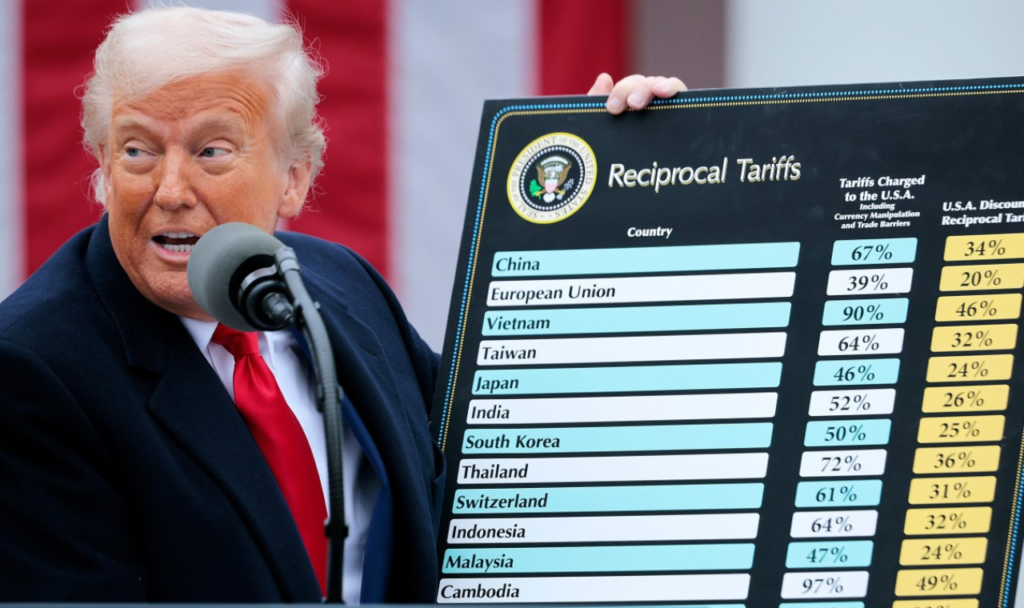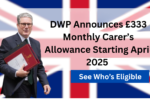The United Kingdom could face a staggering £22 billion hit to its exports as a result of sweeping trade tariffs proposed by former U.S. President Donald Trump. The protectionist measures, if implemented, could disrupt key UK industries, stall economic growth, and strain already fragile international trade relations.
£22 Billion in Exports at Risk
According to new research from the Centre for Inclusive Trade Policy (CITP) at the University of Sussex, a 20% blanket tariff on all U.S. imports—a proposal floated by Trump in his latest presidential campaign—could slash UK exports by £22 billion. This represents a 2.6% reduction in total UK exports globally and threatens a 0.8% annual fall in national economic output.
The impact would reverberate across several key British sectors, including pharmaceuticals, petroleum, fishing, mining, and electrical goods. These industries are particularly vulnerable due to their high exposure to the U.S. market.
“Trade shocks of this magnitude would be deeply damaging to a UK economy already navigating slow growth and post-Brexit trade complexities,” said one researcher from CITP.
Wider Economic Fallout Predicted
Further analysis from the National Institute of Economic and Social Research (NIESR) suggests that Trump’s tariff plan could cut UK economic growth by nearly half. The think tank warns that UK GDP growth could be slashed by 0.7 percentage points in the first year of implementation, and by 0.5 points in the second year.
The predicted knock-on effects include:
- A surge in inflation of 3 to 4 percentage points.
- Higher interest rates, rising by 2 to 3 percentage points.
- Decreased consumer spending power.
These changes could exacerbate the UK’s cost-of-living crisis and make borrowing more expensive for businesses and households alike. In a fragile post-pandemic economy, these shifts could have long-term structural impacts.
For further economic data and forecasts, visit the Office for National Statistics and NIESR.
Automotive Industry Braces for Impact
One of the hardest-hit sectors could be the UK automotive industry, which has historically enjoyed strong trade with the U.S. Jaguar Land Rover (JLR), a flagship British manufacturer based in Solihull, exports nearly 100,000 vehicles annually to the U.S. one of its largest markets.
Following the tariff announcement, JLR temporarily paused shipments to the U.S. while evaluating new pricing and production strategies. The move has sent ripples across the West Midlands, a region that is expected to bear the brunt of the economic fallout.
According to West Midlands economic projections:
- The region may suffer GDP losses of £6.2 billion by 2030.
- National losses tied to the automotive sector could reach £9.8 billion.
- An estimated 137,000 jobs may be at risk across supply chains and related industries.
Local leaders have urged the UK government to take preemptive action. “We cannot afford to be caught flat-footed. The government must engage with U.S. counterparts and advocate for fair trade,” said a regional trade commissioner.
More details on the UK’s automotive industry and trade policy can be found on the Department for Business and Trade.

Financial Markets React
Financial markets have already responded to growing trade tensions. The FTSE 100, along with major U.S. indices such as the S&P 500, suffered steep declines following Trump’s statements on tariffs. Analysts warn of continued volatility if trade wars escalate further.
Accounting giant KPMG has revised its UK growth forecast down to 0.8% for both 2025 and 2026, citing increased global uncertainty. Previous projections stood at 1.7% and 1.4%, respectively.
“The global economy is deeply interconnected. Moves like these have far-reaching consequences not just for the UK and U.S., but for the entire international trading system,” a KPMG analyst said.
To track financial data and market movements, visit London Stock Exchange and Bank of England.
Government Response and Next Steps
As of now, the UK government has not issued a formal response to Trump’s tariff threats. However, officials from the Department for Business and Trade are reportedly monitoring the situation closely and preparing contingency plans to support affected industries.
Trade experts are calling on the government to engage diplomatically with both current and future U.S. administrations, as well as to diversify export markets to buffer against shocks.
“Tariff wars rarely have winners,” said a trade policy advisor. “The UK must remain proactive in protecting its global trade interests.”
The UK currently operates under a trade continuity agreement with the United States, but future policy under a new U.S. administration could alter the dynamics. For updates on trade relations, refer to the UK Trade Agreements Tracker.
Conclusion
While the Trump tariff threat remains a proposal for now, its potential consequences are already being felt. From the factory floors of Solihull to the trading desks of London, the UK economy could be reshaped by the resurgence of U.S. protectionism. Policymakers and business leaders must act swiftly to mitigate the risks, engage in meaningful diplomacy, and reinforce the UK’s resilience in the face of global trade upheaval.

Pankaj Kumar is a journalist at Chandigarh X, covering admit cards, recruitment, and government schemes. His articles provide readers with detailed insights into application processes, eligibility, and exam updates.
Outside of work, Pankaj enjoys traveling, fitness, and cricket, often participating in local matches on weekends.



